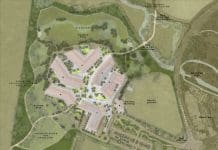NBS, in partnership with Solibri and Butler & Young, has completed a pilot project to demonstrate how currently available tools can be used to automate checking of Building Regulations Approved Documents compliance in a Building Information Model
The team, working Building Regulations Approved Document B, identified which of the clauses are suitable for translation into code, then developed a system to verify that a Building Information Model is compliant with these parts of the Approved Documents.
This is believed to be the first project of its kind that utilises existing software and technologies, including NBS’s Create specification product, objects from the National BIM Library, IFC models and Solibri Model Checker software.
Richard Watson, project sponsor at NBS said: “This is a pioneering study and it has demonstrated what can be achieved combining new methodologies and processes with existing software.
“We still have some way to go before we could have a product on the market, but providing consultants and contractors with a product that can tell them instantaneously whether the design will pass or fail would clearly have huge benefits both in terms of time-saving and the potential for earlier checking.
“This is another huge benefit which should speed up the adoption of BIM.
“We also believe that Building Regulations assessors would find this an enormously helpful tool in automating a proportion of the routine checking and allowing them to concentrate on giving valuable advice in those areas that cannot be automatically checked – typically where the Approved Documents allow greater scope for innovation and judgement.”
Staff from NBS, Solibri and Butler & Young undertook a series of workshop sessions together during which they identified which of the clauses within the chosen Approved Documents were able to be translated into code usable within the software.
The team concluded that there is a large enough proportion of these clauses to enable the development of a checking product that would be of huge value to designers, assessors and constructors. The team went on to develop a set of sample rules using the Solibri rule-checking engine and tested with sample BIM models. The results gave the team confidence that development of rule-checking is feasible using existing tools.
Paul Wilkins CEO of Butler & Young commented: “We spent a concentrated period of time assessing each of the clauses as those that are subjective and open to interpretation cannot be included within checking software.
“What we identified is a significant number of precise rules that lend themselves to being coded and would enable faster and more accurate checking.
“The methodology we adopted allowed these rules to be captured initially by colleagues expert in interpreting the approved documents and then processed into computer code by the software engineers.”
Simon Gilbert, Technical Services Director at Solibri UK said: “Once we defined and worked through the methodologies the most complex task we had was to define the logic structure for the rule dependencies.
“Once this logic was defined it was a relatively simple task to identify and modify the appropriate rule from within the extensive set of template rules which are standard within Solibri Model Checker.
“With only limited training, and time using Solibri Model Checker, the development team at NBS did a remarkable job, in only a few hours, to prepare the prototype ruleset.”
NBS is aiming to bring a product to market during 2014.

















